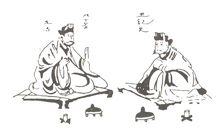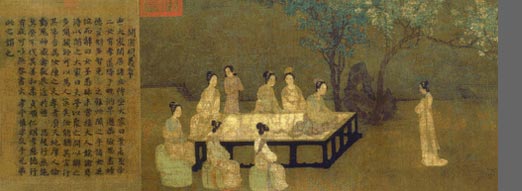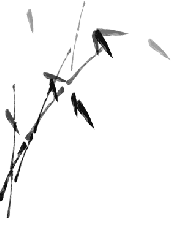| |
|
The development of traditional
Chinese furniture went from the simple to the intricate, and was
closely linked to the Chinese lifestyle and cultural and economic
changes in China. In early antiquity, the Chinese sat mostly on
straw mats on the floor. After the Warring States period (475-221
B.C.), beds and couches began to come into widespread use as seating.
During the Wei-Chin (220-420 A.D.) and the Northern and Southern
dynasties (420-589 A.D.) period, Western-style chairs, folding
stools, and other seating gradually entered China. From this point
on, Chinese everyday living began to be conducted from chairs
rather than sitting cross-legged on the floor. Straw mats came
to be used as coverings for beds and couches.

Beginning in the late Ching Dynasty,
foreign living styles began to be adopted in China, with the result
that originally predominant Chinese-style furnishings gradually
became collector's items. Not only chairs, but also Chinese tables,
cabinets, bookcases, and decorative screens reached the summit
of their development during the Ming ( 1368-1644 A.D.) and Ch'ing
dynasties.
Ming furniture features simple,
smooth, and flowing lines, and plain and elegant ornamentation,
fully bringing out the special qualities of frame-structure furniture.
Influenced by China's burgeoning foreign trade and advanced craftsmanship
techniques, furniture of the Ch'ing Dynasty period turned to rich
and intricate ornamentation, along with coordinated engraved designs.
Because of the high level of development of Chinese furniture
in the Ming and Ch'ing dynasties, most Chinese furniture design
today follows in the tradition of pieces from these two periods.

As in traditional Chinese architecture,
wood is the major material used in the manufacture
of furniture. This was in response both to needs arising from
Chinese lifestyles, and to China's rich forest resources. The
two main types are lacquered furniture and hardwood furniture.
Lacquered furniture was commonly used in palaces, temples, and
in the homes of the wealthy. It includes the t'i-hung ,
or carved lacquer style; t'ien-ch'i in which lacquer
is used to fill in an engraved design, then rubbed flat; miao-ch'i
, or outlined lacquer style; and luo-tien , or furniture
inlaid with mother-of-pearl. Two or more methods might also be
combined in the same piece. Hardwood furniture was frequently
found in the homes of the wealthy, but was even more common in
the homes of nobles and officials. Woods employed include red
sandalwood, pearwood, padauk, ebony, and nanmu. Of these, red
sandalwood is the most highly valued material for use in furniture
making; it is dense, hard, and resistant to decay.
Bamboo and rattan furniture also
have a long history. Bamboo is a product unique to Asia, and is
an especially developed industry in hot and sunny Taiwan. Simple
and ingenious techniques are used to make clever and useful products
that can be ``knocked down,'' and modular pieces that can be used
together or separately. Bamboo may be used in combination with
other materials, such as wood, rattan, metal, and ceramic tile,
in endless variation. Much bamboo and rattan furniture is exported
to Europe and the United States, where it enjoys great popularity.
 |
Chinese are fond of furniture
with inlaid and carved work. In addition to shells and enamel
chips, brilliant, colorful, and artistically grained jade, stones,
ivory (and other animal teeth), horn, agate, and amber are used
for inlaid desi
gns. Marble, for example, is a stone often used
for inlaid work; colorful ceramic plates are also a popular material
for ornamentation. Another
elegant technique used since ancient times is the inlaying of
different kinds and colors of woods in a single piece. The methods
of carving include relief carving, negative engraving, and free-style
carving. Common subjects for furniture carving are flowers; dragons
and phoenixes; the ch'i-lin, a Chinese mythical beast;
and stylized cloud and leaf patterns.
Traditional Chinese furniture
is generally arranged in symmetrical suites or sets. These are,
however, supplemented with other more flexible arrangements to
prevent the room from having too staid an atmosphere. For example,
paintings or examples of calligraphy might be hung on the wall;
ceramic, enamel or other knick-knacks might be placed in an antique
display cabinet; or flower arrangements made of jade or stone
might top a square occasional table. Any or all of these can add
splashes of color and elegant form to the room. These delicate
additions set off the heavy furniture to give a rich composite
effect.
|




